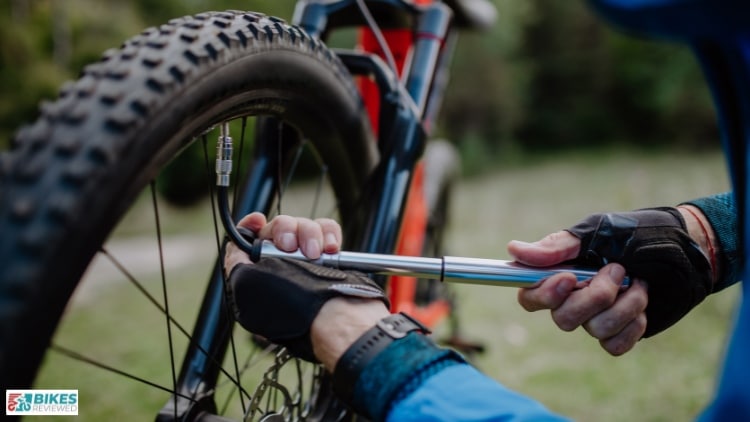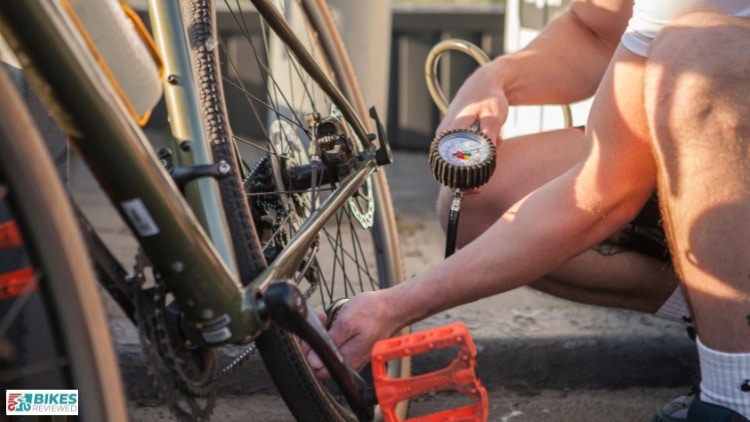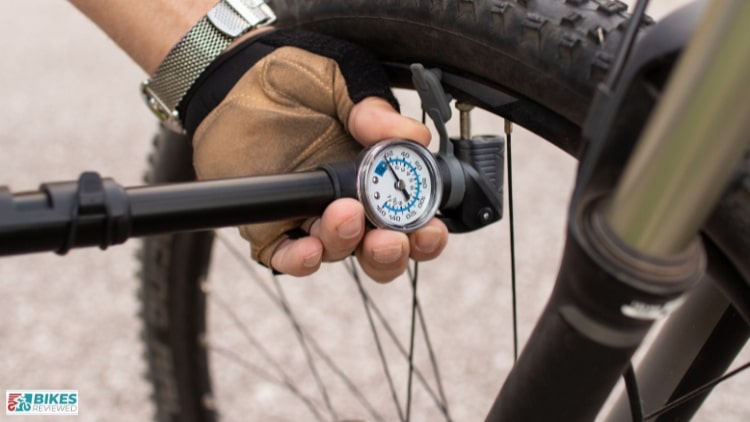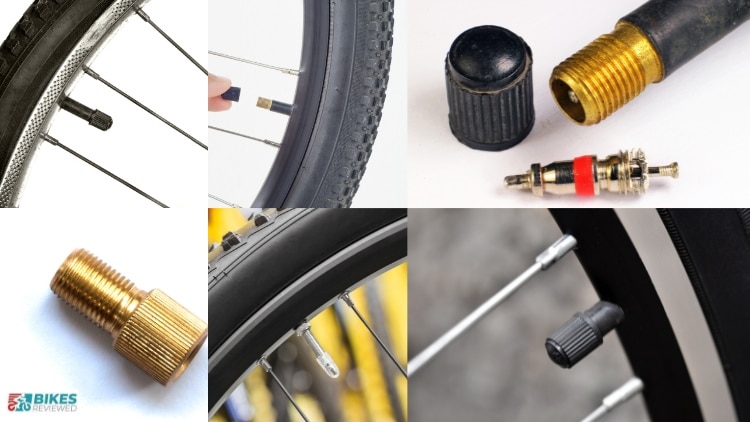Maintaining the right tire pressure for your bike might seem like a small detail, but it can make a huge difference in your riding experience. This guide aims to shed light on the importance of bike tire pressure, the crucial role of a proper pump, and demystify terms like 'tire air pressure' and 'psi for bike tires.' Let's dive into the world of bike maintenance and ensure you're riding with confidence and efficiency.

What Should My Bike Tire Pressure Be?
Understanding the ideal tire pressure for your bike is fundamental to a smooth and safe ride. One of the first things you might notice when examining your bike tires is the recommended pressure range printed on the sides. This range is usually given in pounds per square inch (psi) and is crucial for optimal performance.
Adjusting Pressure Based on Rider Weight
One factor that significantly influences the ideal tire pressure is the weight of the rider. Lighter riders may find that a slightly lower tire pressure provides a more comfortable ride, while heavier riders might benefit from a slightly higher pressure to avoid pinch flats and improve overall stability.
Tire pressure also plays a vital role in traction, especially when riding in different weather conditions. Lowering the pressure slightly can enhance traction on slippery surfaces, such as wet roads or muddy trails. On the other hand, maintaining a higher pressure is beneficial for riding on dry and paved surfaces, offering lower rolling resistance.
Tire Pressure Chart for Various Bike Types
To make things easier, let's break down the ideal tire pressure ranges for different types of bikes:
- Road Bikes: Typically, road bike tires require higher pressure for reduced rolling resistance and increased speed. Aim for a range of 80-130 psi.
- Mountain Bikes: Mountain bike tires benefit from a lower pressure range, typically between 30-50 psi, to improve traction on rough and uneven terrain.
- Gravel Bikes: Gravel riding demands a balance between road and mountain bike pressures, with a recommended range of 40-70 psi.
- Hybrid Bikes: Hybrid bike tires usually fall in the mid-range, around 50-70 psi, offering a versatile setup suitable for various surfaces.
- Kids' Bikes: For the little riders, maintain a lower pressure in the range of 30-40 psi for a smoother and more comfortable ride.
Arming yourself with this knowledge ensures that you're not only riding at the right pressure but also optimizing your bike's performance for the specific terrain you encounter.
By regularly checking and adjusting your tire pressure, you'll experience improved handling, reduced risk of flats, and overall better control of your bike.
Keep in mind that these recommendations serve as a starting point, and personal preferences can play a role in finding the perfect pressure for your ride.
Road Bike Tire Pressure

Road bike tire pressure is a crucial aspect that greatly influences the performance and comfort of your ride. The recommended psi (pounds per square inch) for road bikes typically falls in the range of 80-130 psi. However, it's important to note that this is a general guideline, and adjustments should be made based on individual factors.
One key consideration is the adjustment of tire pressure according to rider weight and tire type. Different riders have varying weights, and this can impact how the tires interact with the road. Heavier riders may need slightly higher pressure to prevent pinch flats and ensure optimal performance. Additionally, the type of tire – whether tubeless, tubular, or clinchers – can also affect the recommended pressure range.
The effects of tire pressure on comfort and performance are significant. Higher pressure often results in a firmer ride, which can translate to better efficiency and speed. On the other hand, lower pressure provides a more comfortable and forgiving ride, especially on uneven surfaces. Finding the right balance is key, and riders often experiment to discover their preferred pressure based on personal preferences and riding style.
Considerations for road conditions and tire width are also important when determining the ideal tire pressure. Smoother roads may allow for slightly higher pressures, enhancing speed and efficiency. In contrast, rougher terrains may warrant lower pressures for improved traction and shock absorption. Moreover, tire width plays a role in distributing the rider's weight and affecting the contact patch with the road, influencing the overall feel of the ride.
Mountain Bike Tire Pressure

Mountain bike tire pressure guidelines differ significantly from those of road bikes, typically ranging from 30-50 psi. Several factors influence the recommended psi for mountain bikes, including tire width, rider weight, and terrain.
The ideal tire pressure for various scenarios and riding styles varies. For aggressive trail riding or downhill descents, lower tire pressure is often preferred to maximize traction and control. However, for smoother trails or cross-country riding, slightly higher pressures may be more suitable to reduce rolling resistance.
An interesting consideration in mountain biking is the importance of slightly higher pressure in rear tires. This provides better pedaling efficiency and prevents pinch flats, especially during climbs. Balancing the front and rear tire pressures is crucial for overall stability and performance on the trail.
Also Read - Top 5 Bicycle Tires For Your MTB Or Road Bike
Why Is Tire Air Pressure Important?
Understanding the importance of tire air pressure is essential for any cyclist. Historical perspectives on tire pressure misconceptions highlight the evolving knowledge in the cycling community. In the past, there were myths about overinflating for speed and underinflated for comfort. However, the modern consensus emphasizes finding the right balance for optimal performance and comfort.
Negative consequences of overinflating and underinflated tires are significant. Overinflated tires can lead to a harsh and uncomfortable ride, decreased traction, and an increased risk of punctures. On the other hand, underinflated tires may result in sluggish handling, a higher likelihood of pinch flats, and reduced overall efficiency.
Several factors influence the ideal tire pressure, including the type of tire, road conditions, and rider weight. Tubeless tires, for example, may allow for lower pressures without sacrificing performance due to the absence of tubes. Road conditions, whether smooth or rough, also play a role in determining the appropriate tire pressure for a given ride.
The connection between tire pressure, comfort, and performance is intricate. Finding the right balance can enhance the overall cycling experience, making rides more enjoyable and efficient. It's a dynamic relationship that often requires riders to fine-tune their tire pressures based on personal preferences and the specific conditions of each ride.
How Much Bike Tire Pressure Is Enough?
Determining how much bike tire pressure is enough involves a general rule for precision – typically within 5 psi of the recommended range. This provides a margin for individual preferences and adjustments based on factors like rider weight and riding style.
Precision requirements for high-level racing vary across different bike categories. Road racing on a velodrome, for instance, may benefit from slightly higher pressures for reduced rolling resistance and increased speed. In contrast, cyclocross racing, which involves a mix of terrains, may necessitate lower pressures for improved traction and maneuverability.
Considerations for weather and road conditions are vital when establishing the ideal tire pressure. Cold weather can cause tire pressure to drop, so riders may need to inflate their tires slightly higher to account for temperature changes. Wet or slippery conditions may also prompt adjustments for improved grip and control.
Understanding and managing bike tire pressure is a key aspect of optimizing your cycling experience. Whether you're navigating smooth roads on a road bike or tackling challenging trails on a mountain bike, finding the right tire pressure for your specific conditions and preferences can make a significant difference in comfort, performance, and overall enjoyment. Experimentation and regular maintenance are key to dialing in the perfect tire pressure for your rides.
Also Read - Top 5 Bike Tire Patch Kits – 2023
Types of Bike Tire Valves

When it comes to bike tire valves, you've likely encountered the Presta and Schrader valves. These little components play a crucial role in maintaining your bike's performance and safety. Understanding the key differences between them can go a long way in ensuring you're equipped with the right knowledge for your cycling adventures.
Presta valves, with their slender design and unique locking mechanism, are commonly found on road bikes and high-performance bicycles. Their slender profile not only reduces weight but also allows for higher tire pressures, making them ideal for racing and fast-paced rides. However, the intricate design can be a bit tricky for some, requiring a specific pump head for inflation.
Characteristics and applications of Schrader valves
On the other hand, Schrader valves, resembling those on car tires, are more common on everyday bikes, including mountain bikes and cruisers. Their wider profile makes them easier to inflate, and you can use a regular air pump – no need for any special adapters. They are sturdy and straightforward, making them a popular choice for bikes that face varied terrains.
Valve types on performance vs. non-performance bikes
The type of valve your bike sports often correlates with its performance level. High-performance bikes, like those built for speed and agility, usually feature the Presta valve. In contrast, your average commuter or mountain bike typically opts for the Schrader valve. Understanding the valve your bike uses not only helps with maintenance but also ensures you're using the right tools for the job.
What to Keep in Mind?
A common mistake many bikers make is relying on the "thumb test" to assess tire pressure. While giving your tire a squeeze might seem intuitive, it's not the most accurate method. Tire pressure can significantly impact your ride's performance and safety, and using a digital tire pressure gauge is the best way to ensure your tires are properly inflated.
Investing in a digital tire pressure gauge might seem like a small detail, but it's a game-changer. These devices provide precise measurements, ensuring you're within the recommended pressure range. Maintaining the right tire pressure not only extends the life of your tires but also enhances your bike's overall performance and handling.
Never exceeding recommended tire pressures
It's a common misconception that more pressure equals a faster ride. However, exceeding the recommended tire pressure can lead to a rough and uncomfortable journey. It may also increase the risk of flats and negatively impact your bike's handling. Always stick to the manufacturer's recommendations for optimal performance and safety.
Maintenance tips for valve stems and Presta valves
Valve stems might seem like a small detail, but they play a vital role in maintaining tire pressure. Regularly check for any signs of wear or damage, and replace them if needed. Presta valves, with their delicate design, require additional care. When inflating, ensure the valve is in the open position, and take care not to over tighten the valve cap to avoid damage.
Checking for tube pinching during flat tire repair
When it comes to flat tire repairs, a common issue is tube pinching. This occurs when the tube gets caught between the tire and the rim, causing subsequent flats. When fixing a flat, carefully inspect the inside of the tire for any foreign objects and make sure the tube is correctly seated before inflating. This simple step can save you from repeated flats down the road.
Final Thoughts:
Understanding the ins and outs of bike tire valves and proper maintenance is crucial for a smooth and enjoyable cycling experience. Whether you're dealing with Presta or Schrader valves, knowing their characteristics and applications ensures you're prepared for any ride.
Safety should always be a top priority when cycling. Adhering to the recommended tire pressures not only enhances your safety on the road but also contributes to the longevity and performance of your bike. Don't compromise on safety – it's the foundation of every great ride.
Encouragement for experimentation within recommended ranges
While sticking to recommended tire pressures is essential, there's room for a bit of experimentation within those ranges. Finding the sweet spot that suits your riding style and terrain can enhance your overall experience. Just remember, it's a balance – too much or too little pressure can affect performance and safety.
In the world of cycling, proper tire pressure is the unsung hero of a comfortable and efficient ride. It affects everything from handling and speed to the lifespan of your tires. By understanding your bike's valve system, using the right tools, and following maintenance tips, you're not just ensuring a safer ride but also maximizing the joy of every pedal stroke. So, gear up, pump those tires right, and hit the road with confidence!
